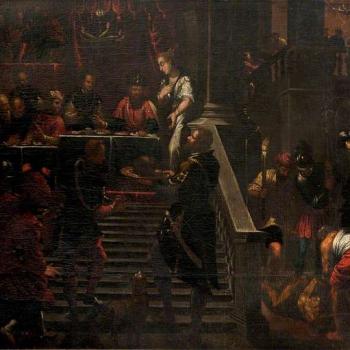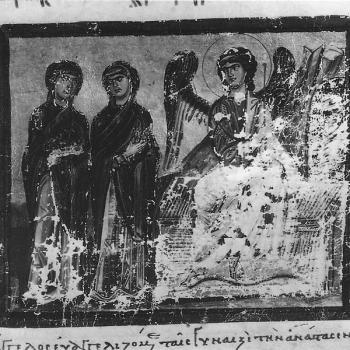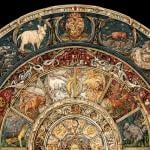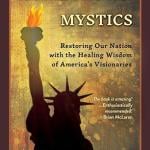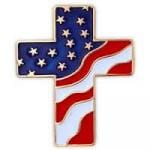In our last column, we looked at five unsung leadership heroes in the Old Testament. Our brief look at Deborah, Aaron, Huldah, Gad, and Baruch touches on an important truth: Biblical leaders don’t have to be primary figures to serve an important purpose. Each one of the individuals mentioned were leaders in their own right, even if we don’t have several chapters devoted to their leadership abilities. Now, in this column, we will look at New Testament leadership, specifically five unsung leadership heroes in the New Testament. Just as relevant as their counterparts, these five individuals teach us about true leadership in few words.

Simeon
First in our look at New Testament leadership is Simeon, who was present at Jesus’ presentation in the temple. Mentioned in ten verses (Luke 2:25-35), we learn Simeon was awaiting Israel’s redemption, was a devout man, and had the Holy Spirit upon his life. Church tradition pictures him as an old man, but we don’t have indication of his age in the text. Under the leading of the Spirit, he went into the temple courts to find Christ as an infant. Upon taking Him in his arms, he proclaimed:
“Sovereign Lord, as You have promised,
you may now dismiss Your servant in peace.
For my eyes have seen Your salvation,
which You have prepared in the sight of all nations:
a light for revelation to the Gentiles,
and the glory of Your people Israel.” (Luke 2:29-32, NIV)
He then turned and prophesied to Mary about Jesus’ future: He will cause many to rise and fall in Israel as a sign to the nations, revealing many hearts. As a result, a sword would also pierce her heart, representing the deep pain she would experience in the crucifixion.
Anna
Also present at Jesus’ dedication was Anna, who is mentioned in only one Scriptural passage: Luke 2:36-38. The record has it that she was a recognized prophetess in her day and she lived on temple grounds night and day, fasting and praying. An older woman (at least eighty-four, perhaps ninety-one or older!), Anna recognized Christ in His infancy and shared the news with all that He was Israel’s Redeemer. This means the first person to tell others about Christ was a woman!
There was also a prophet, Anna, the daughter of Penuel, of the tribe of Asher. She was very old; she had lived with her husband seven years after her marriage, and then was a widow until she was eighty-four. She never left the temple but worshiped night and day, fasting and praying. Coming up to them at that very moment, she gave thanks to God and spoke about the child to all who were looking forward to the redemption of Jerusalem. (Luke 2:36-38, NIV)
Barnabas
Church history cites Barnabas as an apostle, working in connection with the Apostle Paul. He’s found throughout the Book of Acts and is mentioned in several Pauline letters. Initially rebuked by Paul for following the regulations of the Judaizers, he came around to stand strong in the faith and instruction therein. Together, they forged several missionary trips to help educate the church, especially against arguments that would reimpose the law on believers. Locations for travel included Antioch and major cities on Cyprus, including Pamphylia, Pisidia, and Lycaonia. It also suggests John Mark was introduced to Paul by Barnabas, being a relative of his.
At some point, the two parted ways, although Scripture indicates their decision was amicable. We don’t know much of Barnabas’ work as an independent leader, although tradition states he was martyred. He’s credited with authorship of the Epistle of Barnabas, which expounds heavily on the presence of Christ in the Old Testament.
James, Cephas and John, those esteemed as pillars, gave me and Barnabas the right hand of fellowship when they recognized the grace given to me. They agreed that we should go to the Gentiles, and they to the circumcised. (Galatians 2:9, NIV)
Dionysius the Areopagite
Many New Testament figures are mentioned in passing. As a result, we don’t often consider what they did, or how they contributed to New Testament leadership. One such individual is Dionysius the Areopagite. He was an Athens judge, serving at the Areopagus court. Thanks to the ministry of the Apostle Paul, Dionysius converted to Christianity. He went on to serve as the first Bishop of Athens.
When they heard about the resurrection of the dead, some of them sneered, but others said, “We want to hear you again on this subject.” At that, Paul left the Council. Some of the people became followers of Paul and believed. Among them was Dionysius, a member of the Areopagus, also a woman named Damaris, and a number of others. (Acts 17:32-34, NIV)
Phoebe
Individuals against women’s ordination tend to deliberately overlook Biblical passages that relate to women who served in New Testament leadership. One such woman is Phoebe, a deacon entrusted to deliver a letter to Rome for the Apostle Paul. Despite the fact that he had at least five different men who could have also performed the task, Phoebe was selected as the woman for the job. In her defense, Paul outlines her credentials for delivering the letter on his behalf. Such a duty wasn’t customary for women in the Roman world, and this displays her ability, character, and integrity as a woman of God. It’s also possible that, according to her title of “servant to many,” she was a woman of means who hosted the local church of Cenchreae in her home.
I commend to you our sister Phoebe, a deacon of the church in Cenchreae. I ask you to receive her in the Lord in a way worthy of his people and to give her any help she may need from you, for she has been the benefactor of many people, including me. (Romans 16:1-2, NIV)
Summing it all up
There is much for us to learn in unsung Bible leaders, especially those found in the New Testament. Who is your favorite unsung Bible character?






